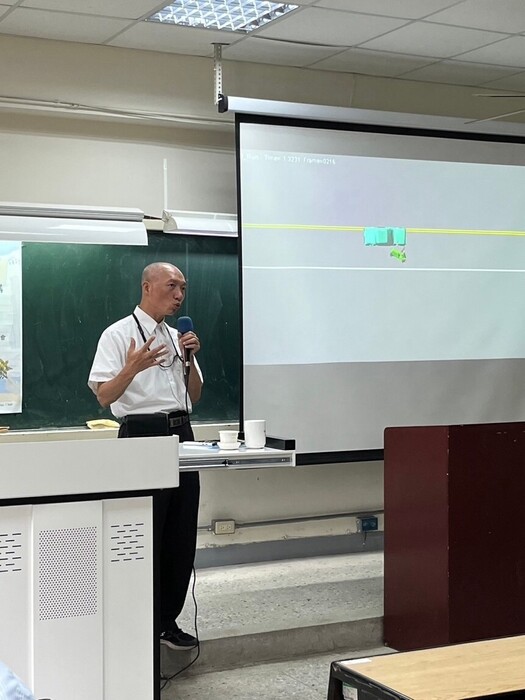The Importance of Preliminary Work in Traffic Accident Identification - Special Lecture Report
publish date :
2024-05-10
Our department organized a special lecture and invited Mr. Shi, the Chief Commissioner of the Taoyuan City Government Vehicle Traffic Accident Identification Committee, to deliver a talk on “The Importance of Preliminary Work in Traffic Accident Identification.” Mr. Shi has previously served as the Section Chief of the Accident Identification Section of the Taoyuan City Government Transportation Bureau, the Public Transportation Technology Officer of the Taoyuan City Government Transportation Bureau, and the Secretary of the Traffic Accident Identification Committee of the Directorate General of Highways, Ministry of Transportation and Communications. He has dedicated significant efforts to traffic accident identification.
Mr. Shi began by sharing his journey into this field, explaining why he chose traffic accident identification as his career. He then shared five cases related to police enforcement with the students and faculty, reminding everyone to focus on the task at hand while also paying attention to road traffic, using the principle of proportionality to protect themselves and other road users.
Mr. Shi highlighted three key points in identification: safety, completeness, and thoroughness. “Safety” means protecting oneself first to protect others, as roads can be dangerous even at accident scenes. Ensuring the scene is safe before proceeding with identification work is crucial. “Completeness” involves meticulous evidence collection, not overlooking any traces, including people, vehicles, environment, and police interview records. The collected evidence is vital for future accident identification. “Thoroughness” means ensuring effective and accurate transfer of evidence from the accident scene to diagrams, requiring precise drawing to make it clear to others. With technological advancements, drone technology is increasingly used in evidence collection, significantly aiding effective transfer.
He concluded with key points from the “Sunflower Manual of Traffic Accident Identification”: “The key to accident identification lies in adhering to regulations,” “Trust in factual evidence, not imagination,” and “High professional ethics lead to careful and quality conclusions.” He encouraged everyone, whether as accident identification experts or enforcement officers, to maintain professionalism, uphold occupational ethics, and administer according to the law to protect the safety of people’s lives and property.
Mr. Shi began by sharing his journey into this field, explaining why he chose traffic accident identification as his career. He then shared five cases related to police enforcement with the students and faculty, reminding everyone to focus on the task at hand while also paying attention to road traffic, using the principle of proportionality to protect themselves and other road users.
Mr. Shi highlighted three key points in identification: safety, completeness, and thoroughness. “Safety” means protecting oneself first to protect others, as roads can be dangerous even at accident scenes. Ensuring the scene is safe before proceeding with identification work is crucial. “Completeness” involves meticulous evidence collection, not overlooking any traces, including people, vehicles, environment, and police interview records. The collected evidence is vital for future accident identification. “Thoroughness” means ensuring effective and accurate transfer of evidence from the accident scene to diagrams, requiring precise drawing to make it clear to others. With technological advancements, drone technology is increasingly used in evidence collection, significantly aiding effective transfer.
He concluded with key points from the “Sunflower Manual of Traffic Accident Identification”: “The key to accident identification lies in adhering to regulations,” “Trust in factual evidence, not imagination,” and “High professional ethics lead to careful and quality conclusions.” He encouraged everyone, whether as accident identification experts or enforcement officers, to maintain professionalism, uphold occupational ethics, and administer according to the law to protect the safety of people’s lives and property.
